Petunias – one of the most popular flowers among gardeners. These low-growing ornamental plants bloom profusely and for a long time, making them a perfect choice for framing and decorating flower beds.
Mature plants are relatively low-maintenance. However, growing seedlings requires patience and attention to detail, which is why many gardeners prefer to buy them from nurseries and garden centers. Unfortunately, such seedlings can be expensive and are not always healthy or high-quality. A more reliable and cost-effective option is to grow your own petunias from seeds. This is the most challenging stage of cultivation, but with the right knowledge and techniques, even beginners can succeed. Read on to learn when and how to sow petunia seeds correctly.
Table of contents
How to Grow Petunia from Seeds at Home
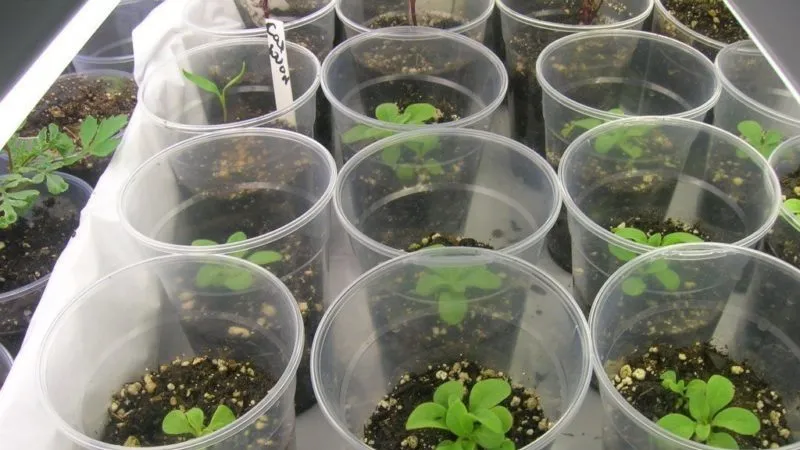
First, you need to choose the right seeds. Petunia seeds are available in specialized garden stores and online retailers. Occasionally, they can also be found in supermarkets.
Avoid buying seeds from unreliable sources. Self-collected seeds often produce unpredictable results, as petunias easily cross-pollinate, leading to flowers that may differ from the parent plant.
Note! Some petunia varieties and hybrids do not produce seeds and can only be propagated vegetatively.
Garden centers typically sell two types of seeds – pelleted (coated) and loose. Pelleting involves a special coating that makes the seeds larger and easier to handle. These seeds are pre-treated, saving you time on preparation.
The downside of pelleted seeds is that the coating can sometimes inhibit germination. They are also more expensive and come in smaller quantities per package.
Loose seeds are more affordable but often require additional preparation. Their small size makes sowing more challenging, yet they remain a popular choice among gardeners.
When to Sow Petunia Seeds
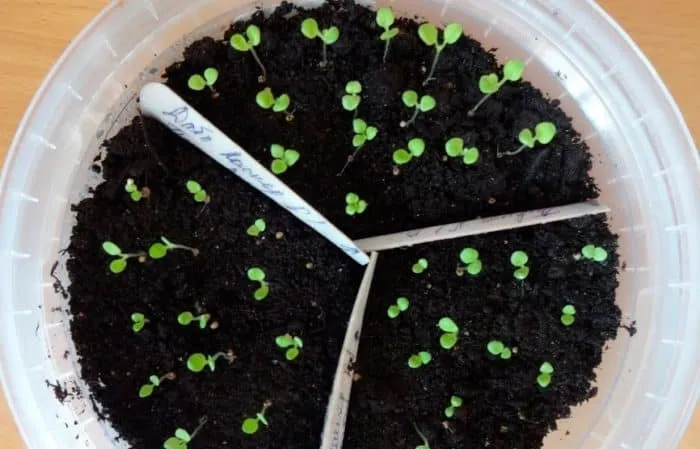
On average, petunias take 10 to 12 weeks from sowing to flowering. The ideal sowing time depends on when you want the flowers to bloom and the local climate.
In southern and central Europe, petunias can be sown from mid-January to late February. However, to ensure healthy seedlings, supplemental lighting (fluorescent or grow lights) is necessary. Without extra light, it’s best to sow from early March to early April.
In cooler northern regions, such as Scandinavia, sowing is best done in mid-spring (April). This ensures the seedlings are strong enough for transplanting once the weather warms up.
Many experienced gardeners follow the lunar calendar when choosing sowing dates. It’s believed that seeds planted during favorable lunar phases grow stronger and healthier.
Avoid sowing during unfavorable days, as germination rates may be lower, and the plants may grow weaker.
Seed Preparation
Pelletted and pre-treated loose seeds do not require additional preparation – this information is usually indicated on the packaging.
If seeds haven’t been pre-treated, they should be prepared before sowing. Disinfect them by soaking for 30 minutes in a light pink potassium permanganate solution, hydrogen peroxide, or a fungicide like "Fitosporin." Then, stimulate germination by soaking them for 24 hours in a solution of "Epibrassinolide" or a similar growth enhancer.
After this, the seeds are ready for sowing. Some gardeners prefer pre-germinating seeds. To do this, place a few layers of damp gauze on a plate, scatter the seeds evenly, cover with another layer of damp gauze, and wrap in plastic film. Keep the plate in a warm place, ensuring the gauze stays moist. Seeds should sprout within a few days.
Choosing Containers and Soil
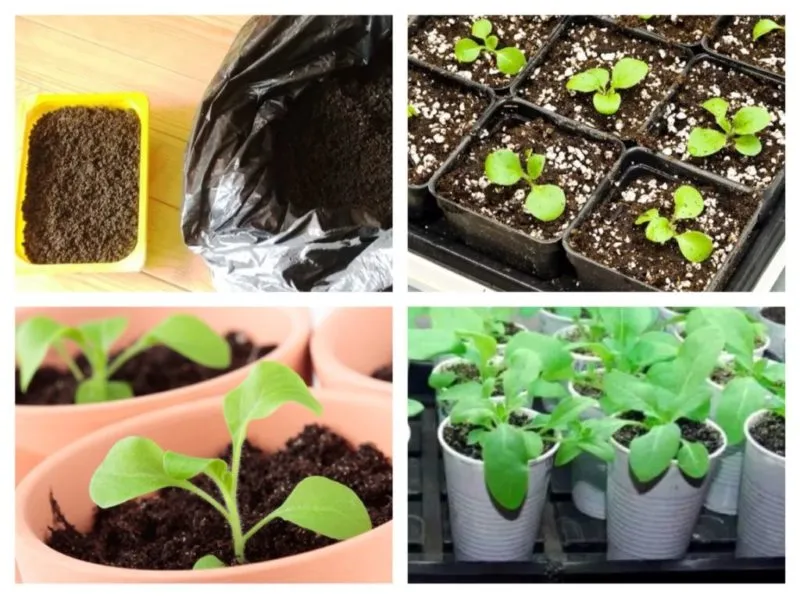
Petunia seeds are usually sown in a common tray. A wide container, 10-15 cm deep, works well, but you can also use plastic cups, cut bottles, or food containers.
Before use, disinfect containers by rinsing them with boiling water or soaking them in a dark pink potassium permanganate solution.
Peat pellets are another convenient option. Prepare them as follows:
- Place the pellets in a deep container with the indentation facing down and pour boiling water over them until fully submerged.
- Once the water is absorbed, add more boiling water until the pellets expand completely.
- Remove the expanded pellets, flip them indentation-side up, drain excess water, and place them on a tray.
Petunias prefer slightly acidic or neutral soil. Here are some suitable soil mixes:
- Commercial potting mix – universal seedling soil or specialized flower soil.
- A 1:1 mix of garden soil and water-retaining crystals.
- A nutrient-rich blend: 2 parts garden soil, 2 parts peat, 2 parts compost, and 1 part sand.
Sterilize the soil by baking it in the oven or drenching it with a hot solution of copper sulfate or potassium permanganate.
Additionally, prepare drainage (crushed shells, fine expanded clay, or ceramic pieces) and sterilize it as well.
Sowing Methods

Before sowing, prepare the container correctly. Add a 1-2 cm layer of drainage at the bottom, then fill with soil, leaving 3-5 cm from the top. Moisten the soil with warm water using a spray bottle.
Pelletted seeds can be placed in rows, spaced 2-4 cm apart, and lightly pressed into the soil without covering.
Loose seeds require more care. Here are three sowing techniques:
- Using toothpicks: Pour seeds onto a sheet of paper. Dip a toothpick in water, pick up a single seed, and transfer it to the soil. Repeat in rows, spacing seeds 2-3 cm apart. Lightly mist with water.
- Mixing with sand: Combine seeds with fine sand and spread evenly over the soil. Mist lightly with water.
- Sowing on snow: Place a thin layer of snow over the soil, then scatter seeds in rows, spacing them 2-3 cm apart.
Cover the container with plastic wrap or glass and place it in a warm, bright spot.
Seedling Care
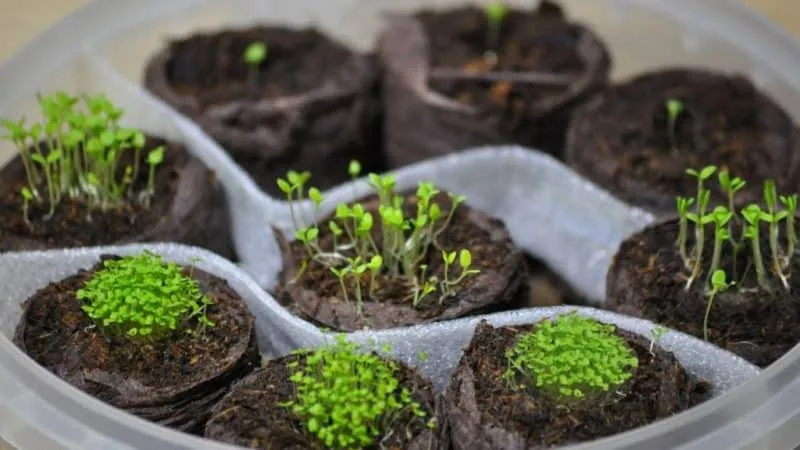
To grow strong, healthy petunias, proper care is essential. Weak or leggy seedlings may not survive transplanting.
Follow these guidelines for optimal growth:
- Temperature: Maintain +24…+26°C until germination, then reduce to +20…+22°C.
- Light: Place seedlings on a south or southeast-facing windowsill. Provide 12 hours of light daily using grow lights if needed, especially in winter.
- Watering: Before germination, mist the soil lightly. After sprouting, water gently at the base using a syringe or narrow-spouted watering can. Avoid wetting the leaves.
- Ventilation: Remove the cover daily to wipe condensation and allow airflow. Gradually increase ventilation time before removing the cover entirely.
- Transplanting (Pricking Out): When seedlings develop two true leaves, transplant them into individual 250-300 ml pots with drainage holes. Handle roots carefully and water gently.
- Pinching: When 3-4 leaf pairs form, pinch the top to encourage bushier growth.
- Hardening Off: Two weeks before transplanting outdoors, expose seedlings to outside conditions gradually, starting with 3 minutes and increasing daily.
- Fertilizing: Avoid feeding before pricking out. After transplanting, fertilize every two weeks, alternating between mineral and organic fertilizers.
Transplanting Petunias Outdoors
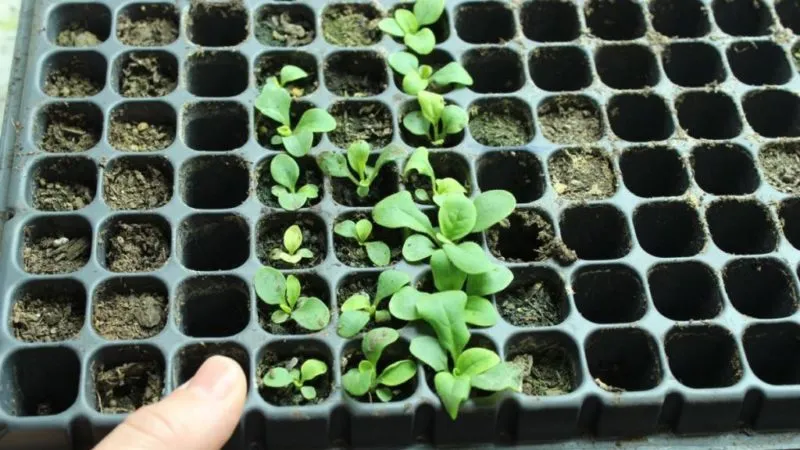
In southern Europe, transplant in early May; in central regions, late May; and in colder areas, mid-June.
Choose a sunny spot with fertile soil. Enrich the soil with compost (6 kg per m²) and water with a hot solution of 1 tbsp copper sulfate per 10 liters of water.
Tip: Compact petunias work well as border plants.
Spacing depends on the variety:
- Small-flowered: 8-20 cm apart.
- Large-flowered: 23-25 cm apart.
- Trailing varieties: 28-30 cm apart.
Dig 10 cm deep holes, add 1 tbsp wood ash, water, and plant the seedlings.
Expert Tips
Experienced gardeners recommend these tricks for healthier petunias:
- Soak water-retaining crystals in a growth stimulant solution before mixing with soil to enhance moisture retention.
- Use low-acidity black peat instead of high-acidity brown peat for seedlings.
- Opt for white or river sand; yellow sand contains excess iron.
- Keep seedlings away from radiators to avoid dry, hot air.
- Optionally, trim the central root by one-third during the second transplant to encourage lateral root growth.
Conclusion
Growing petunias from seeds requires patience and attention, but with proper care, even beginners can achieve beautiful, blooming plants. Choose high-quality seeds, follow the guidelines, and enjoy vibrant petunias in your garden!







